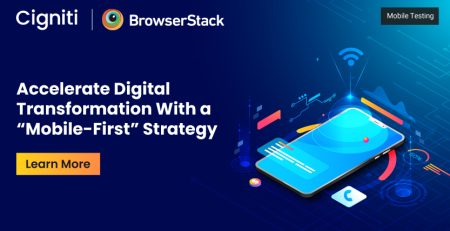How Technology is helping ensure the continuity of Education
The COVID-19 pandemic has affected over 72% of the world’s student population with the closures of academic institutes in most countries to contain the spread. Although this action was required to ensure the safety of students, teachers, as well as the supporting staff, the closures posed great challenges for educational institutes to continue their regular activities. While students were preparing for their graduation ceremonies & applying for colleges and higher education institutes were getting ready to welcome their next batch of freshmen, the global outbreak has put a massive pause on everything regular.
Our education system was long due for reform. We still complete our education in a formal classroom lecture setting – the same way our grandparents, and their grandparents received their education. To break the monotony of rote learning, Education Technology or EduTech or EdTech was gradually coming to surface. However, the popularity of such digital learning solutions was scarce. With almost entire global population along with the students are confined within their homes, digital technology is becoming the go-to-solution to maintain continuity of learning and minimize the impact of the virus on the delivery of education.
Digital platforms such as online learning management systems and video conferencing tools are coming handy to schools and colleges for making sure their students are able to access the course material as well as communicate with their professors and teachers conveniently. The global education system is in rapid state of digital transformation as students and faculty get accustomed to the new way of learning and teaching. EdTech providers are working rigorously to fulfill the sudden surge in demand while also ascertaining that their tools and platforms live up to the expectations. Let us have a look at these digital solutions that are empowering the educational institutes with capabilities for offering distance learning to their students.
Reshaping the world with digital transformation in education
With less than 3% of the global expenditure on technology, the world education system was extremely under-digitized. In the pre-COVID era, the digital spend was expected to grow to $342 billion by 2025. However, the new reality of distance learning in this pandemic situation is rendering all such forecasts redundant. We can, in fact, expect to see a much higher percentage of change in how education systems approach technology and how fast the digital reform take place within the sector.
The sharp upward rise in the adoption of EdTech platforms is positioning these digital solutions as a necessity instead of a luxury. In addition to helping world’s countries to reduce the spread of the coronavirus, the virtual learning platforms also bring the benefits of cost-efficiency, flexibility, and effectiveness. Education can be provided and received with limited resources, while lifting any geographical and physical limitations. With online learning platforms, students enjoy the liberty of learning at their own pace, and accessing the recorded lectures on-demand. More and more EdTech solutions providers are working on engineering advanced features in their tools to make the learning and teaching experience completely seamless yet highly effective. The interactive aspects in such digital tools are proving helpful in increasing engagement amongst the students even under remote settings.
Breaking the conventional barriers to deliver unconventional education
UNESCO and The World Bank are supporting global countries in their process of digitalizing their education system. The World Bank is working closely with the Ministries of Education in various countries while supporting them in their effort to develop and offer remote learning opportunities to the students amid the school closures.
Within a traditional classroom setting, the teaching staff often had the limitation of resources which they can use to explain any concept to their students. As the education system moves out of the conventional environment, it now has the advantage of leveraging unconventional methods for teaching, which would ultimately improve retention while eliminating the rote learning practices.
In addition to the videos, podcasts, on-demand access to resources and curriculum, and online classes, there are various platforms that enable collaborative engagement between the students and the teachers during an online event or lecture. Next-gen technologies such as Augmented Reality (AR) and Virtual Reality (VR) can be utilized to help students understand complex concepts, theories, and models. These technologies can also help eliminate the limitations regarding laboratory-based learning in remote learning situation. Further, there are also specially-designed online platforms that cater specifically to the special needs students such as dyslexia or Autism.
An investment in knowledge pays the best interest
This was once said by Benjamin Franklin. And as Nelson Mandela was quoted as saying, “Education is the most powerful weapon which you can use to change the world.” Without education, we would not have the pharmacists tirelessly working on developing an anti-COVID-19 vaccine. Without education, we would not have the trained doctors fighting the battle against the virus on the frontline. And without education, we would not have these digital tools that are helping the global population to try and ensure continuity of their disrupted lives. There is no doubt on the importance of education in any society and thus, we cannot ignore its criticality in the situation where our survival is endangered.
As much as the EdTech tools and solutions are facilitating education continuity, they are not completely immune to the glitches and errors that a digital platform may encounter. There have been several incidents reported of unwanted attendees in a virtual classroom, disturbing and distracting the event with their shenanigans. To prevent such episodes, it is imperative that all the user parties including students, teaching staff, and parents are educated on the do’s and don’ts of using digital tools. They should be made aware of the security protocols for protecting themselves as well as others from malicious hackers.
From the end of the providers of these EdTech tools and digital platforms, ample care should be given in making sure that the users do not face even the miniscule-level obstacles in their online learning classes. This would involve investing in and performing thorough, end-to-end quality assurance of their platforms by investing in educational application testing services. Doing so will help them preempt any bugs or glitches present in their systems before their users come across them. A well-functioning, reliable, secure, and robust digital education platform is essential in developing the trust among the education system for this new way of learning.
Cigniti’s Digital assurance & testing solutions address the multi-faceted needs of digital transformation, while keeping agility and customer centricity at the core of our services. We conduct comprehensive testing across the digital value chain encompassing digital marketing, web portals, web content, digital assets, web analytics, as well as the entire digital ecosystem including cloud, mobility, big data, and connected devices.





Leave a Reply